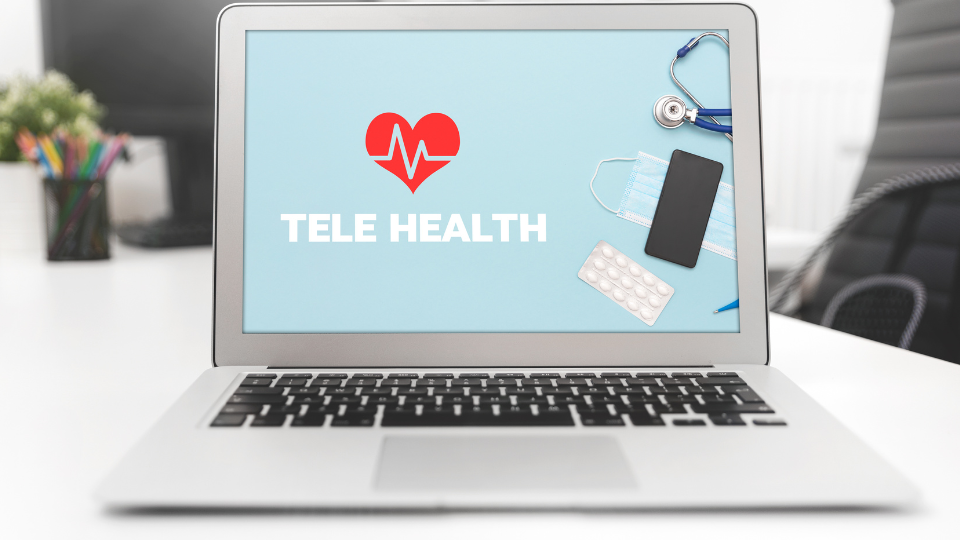Zepbound Diarrhea Treatment Options
Key TakeawaysZepbound (tirzepatide) is an FDA-approved medication primarily for weight management and improving obstructive sleep apnea by reducing body fat.Diarrhea is a [...]
Read More
Medically reviewed by Abhijit Bhattacharyya | MD, PhD, MBA, Tufts University School of Medicine - Miami, Florida on July 12th, 2025.
The landscape of healthcare is evolving rapidly, and telehealth is at the forefront of this transformation. With advancements in technology, the way patients access medical care is changing, making it more convenient, efficient, and personalized. As we look to the future, several trends and innovations are shaping the telehealth sector, promising to revolutionize the patient experience. One company leading this charge is Doctronic, an AI-powered healthcare service that is redefining direct-to-patient care.
 The Rise of AI in Healthcare
The Rise of AI in HealthcareArtificial Intelligence (AI) is no longer a futuristic concept; it is actively being integrated into various aspects of healthcare. AI technologies are enhancing diagnostic accuracy, streamlining administrative processes, and providing personalized patient care. Doctronic exemplifies this trend by offering an AI doctor that not only provides immediate medical advice but also learns from each interaction, creating a tailored experience for every user. The implications of this technology extend beyond individual patient interactions, potentially transforming entire healthcare systems by making them more efficient and responsive to patient needs.
One of the most significant advantages of AI in telehealth is its ability to analyze vast amounts of medical data quickly. Doctronic leverages peer-reviewed medical research to deliver accurate diagnoses and treatment recommendations in a matter of seconds. This capability allows patients to receive timely information about their health concerns, which is crucial in preventing conditions from worsening. Moreover, AI systems can identify patterns and correlations in data that may not be immediately apparent to human practitioners, leading to earlier detection of diseases such as cancer or diabetes. As these systems continue to evolve, they promise to further reduce the incidence of misdiagnoses, ultimately saving lives and reducing healthcare costs.
Unlike traditional healthcare models, where a patient may feel like just another number, Doctronic's AI doctor remembers individual patients, their medical histories, and previous interactions. This personalized approach not only fosters a sense of trust but also enhances the quality of care. Patients can feel confident knowing that their AI doctor is familiar with their unique health profile. Furthermore, this level of personalization allows for more proactive health management; for instance, the AI can remind patients about medication schedules or suggest lifestyle changes based on their specific conditions and preferences. As AI continues to learn from patient interactions, it can also provide insights into emerging health trends, helping both patients and healthcare providers stay ahead of potential health issues.
Telehealth has made healthcare more accessible, breaking down geographical barriers that once limited patient access to medical professionals. With services like Doctronic, patients can consult with an AI doctor from the comfort of their homes, eliminating the need for travel and long wait times. This shift not only saves time but also reduces the stress associated with traditional in-person visits, allowing patients to focus on their health rather than logistics. Furthermore, telehealth can be particularly beneficial for those with mobility issues or chronic conditions that make traveling challenging, ensuring that everyone has the opportunity to receive quality care.
One of the most appealing aspects of telehealth is its round-the-clock availability. Doctronic offers inexpensive telehealth video visits with licensed doctors 24/7 across all 50 states. This means that patients can receive care whenever they need it, whether it's a late-night health concern or a weekend issue. The convenience of having medical professionals available at any time significantly enhances patient satisfaction. Additionally, this constant access to healthcare providers can lead to quicker diagnoses and treatment plans, as patients are no longer limited by traditional office hours. The ability to reach out for help at any hour can also alleviate anxiety, providing peace of mind that medical assistance is just a click away.
Healthcare costs can be a significant burden for many individuals and families. Doctronic addresses this concern by providing affordable telehealth services, with video consultations costing less than $40. This pricing model makes healthcare more attainable for a broader audience, ensuring that financial constraints do not prevent individuals from seeking necessary medical attention. Moreover, the cost-effectiveness of telehealth extends beyond just the consultation fees; patients also save on transportation costs and time off work, making it an even more attractive option. As the healthcare landscape continues to evolve, services like Doctronic are paving the way for a more inclusive system that prioritizes both accessibility and affordability, ultimately leading to better health outcomes for all.
Telehealth is not just about providing care; it also plays a crucial role in engaging patients in their health journeys. With Doctronic, patients are empowered to take charge of their health by accessing information and resources that were previously difficult to obtain. This shift in engagement not only fosters a sense of ownership over one’s health but also encourages a more collaborative relationship between patients and healthcare providers. As patients become more informed, they are more likely to participate actively in discussions about their treatment plans, leading to a more personalized approach to care.
Doctronic encourages proactive health management by offering comprehensive answers to health questions. Patients can engage with the AI doctor to understand their symptoms better and explore potential treatment options. This proactive approach helps patients make informed decisions about their healthcare, leading to better outcomes. Moreover, by utilizing data analytics, Doctronic can identify trends in patient behavior and health metrics, allowing for tailored reminders and alerts that prompt users to schedule check-ups or adhere to medication regimens. Such features not only enhance patient accountability but also contribute to the early detection of potential health issues, ultimately improving long-term health trajectories.
In addition to providing diagnoses and treatment recommendations, telehealth platforms like Doctronic can offer educational resources tailored to individual patients. By equipping users with knowledge about their conditions and treatment options, these platforms promote a more informed patient population. Interactive modules, videos, and articles can cater to various learning styles, ensuring that all patients, regardless of their background or health literacy, can understand their health better. Furthermore, the integration of community forums within these platforms allows patients to share experiences and insights, fostering a supportive environment where individuals can learn from each other’s journeys. This sense of community can be particularly beneficial for those managing chronic conditions, as it provides emotional support and practical advice from peers who truly understand their challenges.
While the future of telehealth appears bright, there are challenges that must be addressed to ensure its success. Issues such as data privacy, regulatory compliance, and the need for a robust technological infrastructure are critical considerations for the ongoing development of telehealth services. Additionally, the integration of telehealth into existing healthcare systems presents its own set of challenges, particularly in terms of interoperability and the training of healthcare professionals to effectively utilize these new technologies.
As telehealth relies heavily on digital platforms, ensuring the privacy and security of patient data is paramount. Companies must implement stringent data protection measures to safeguard sensitive health information. Patients should feel confident that their personal data is secure when using telehealth services. This involves not only employing advanced encryption methods but also regular audits and updates to security protocols to address emerging threats. Furthermore, educating patients about their rights regarding data privacy can empower them to make informed decisions about their health information.
Telehealth regulations vary significantly across states and countries. Navigating these regulations can be complex for telehealth providers as they must ensure that their services comply with all relevant healthcare laws and regulations to operate effectively in all 50 states. This includes understanding the nuances of licensing requirements, reimbursement policies, and patient consent laws. Additionally, as telehealth continues to evolve, staying abreast of legislative changes and advocating for more streamlined regulations will be essential for providers to adapt and thrive in this dynamic landscape.
Another significant challenge lies in the technological infrastructure required to support telehealth services. Reliable internet access is a prerequisite for effective telehealth delivery, yet many rural and underserved areas still struggle with connectivity issues. To bridge this digital divide, initiatives aimed at improving broadband access are crucial. Moreover, telehealth platforms must be user-friendly and accessible to patients of all ages and technological backgrounds. This includes offering support for various devices and ensuring that the software is intuitive enough to minimize barriers to use. Training healthcare providers in the effective use of these platforms is equally important, as their comfort with technology can significantly influence patient engagement and satisfaction.
Preventive care is essential for maintaining health and preventing chronic diseases. Telehealth can play a pivotal role in promoting preventive measures, allowing patients to engage in regular health check-ups and screenings without the barriers typically associated with traditional healthcare settings.
With the convenience of telehealth, patients can schedule regular check-ups with their healthcare providers. Doctronic’s platform allows individuals to consult with an AI doctor to discuss their health status and receive recommendations for preventive measures, such as vaccinations or lifestyle changes.
 Chronic Disease Management
Chronic Disease ManagementFor individuals managing chronic conditions, telehealth offers a way to monitor health and receive ongoing support. Doctronic can help patients track symptoms and medication adherence, providing timely interventions when necessary. This continuous engagement is vital for effective chronic disease management.
The future of telehealth is likely to be characterized by continuous innovation. As technology advances, new tools and features will emerge, further enhancing the patient experience. Doctronic is at the forefront of these innovations, setting the stage for the next generation of telehealth services.
Wearable technology has gained popularity in recent years, providing individuals with real-time health data. The integration of telehealth services with wearable devices could revolutionize patient monitoring. Imagine a scenario where Doctronic’s AI doctor receives data from a patient’s smartwatch, allowing for real-time health assessments and personalized recommendations based on the patient’s current condition.
Virtual reality (VR) has the potential to transform telehealth consultations. By creating immersive environments, VR can enhance the patient experience during remote consultations, making them feel more personal and engaging. This technology could be particularly beneficial for mental health services, where creating a comfortable environment is crucial.
The future of telehealth is bright, with innovations and advancements promising to enhance patient care significantly. Doctronic is leading the way in revolutionizing healthcare delivery through AI-driven solutions that prioritize convenience, personalization, and accessibility. As telehealth continues to evolve, it is essential for patients and providers to embrace these changes, ensuring that healthcare becomes more efficient and patient-centered.
As we move forward, the integration of AI, wearable technology, and other innovations will shape the telehealth landscape, making quality healthcare accessible to all. With Doctronic, the future of telehealth is not just about convenience; it’s about empowering patients to take control of their health in a way that is tailored to their individual needs.
For those seeking an innovative approach to healthcare, Doctronic offers a unique solution that combines the latest in medical research with the convenience of telehealth. Experience the future of healthcare today by visiting Doctronic.ai.
Don't wait to experience the personalized, AI-powered healthcare revolution. With Doctronic, you're not just another patient; you're part of a new era of medical care that's faster, smarter, and more personal. Get quality care in seconds, tap into the most modern medicine, and enjoy the undivided attention of an AI doctor that remembers every detail about you. Skip the line. Talk to an AI Doctor Now, for free.
Key TakeawaysZepbound (tirzepatide) is an FDA-approved medication primarily for weight management and improving obstructive sleep apnea by reducing body fat.Diarrhea is a [...]
Read MoreKey TakeawaysZepbound is a once-weekly injectable medication for weight management and obstructive sleep apnea (OSA) linked to obesity.Taking Zepbound a day early is [...]
Read MoreKey TakeawaysZepbound is an FDA-approved medication for chronic weight management in adults with obesity or overweight, and for moderate to severe obstructive sleep apnea [...]
Read More